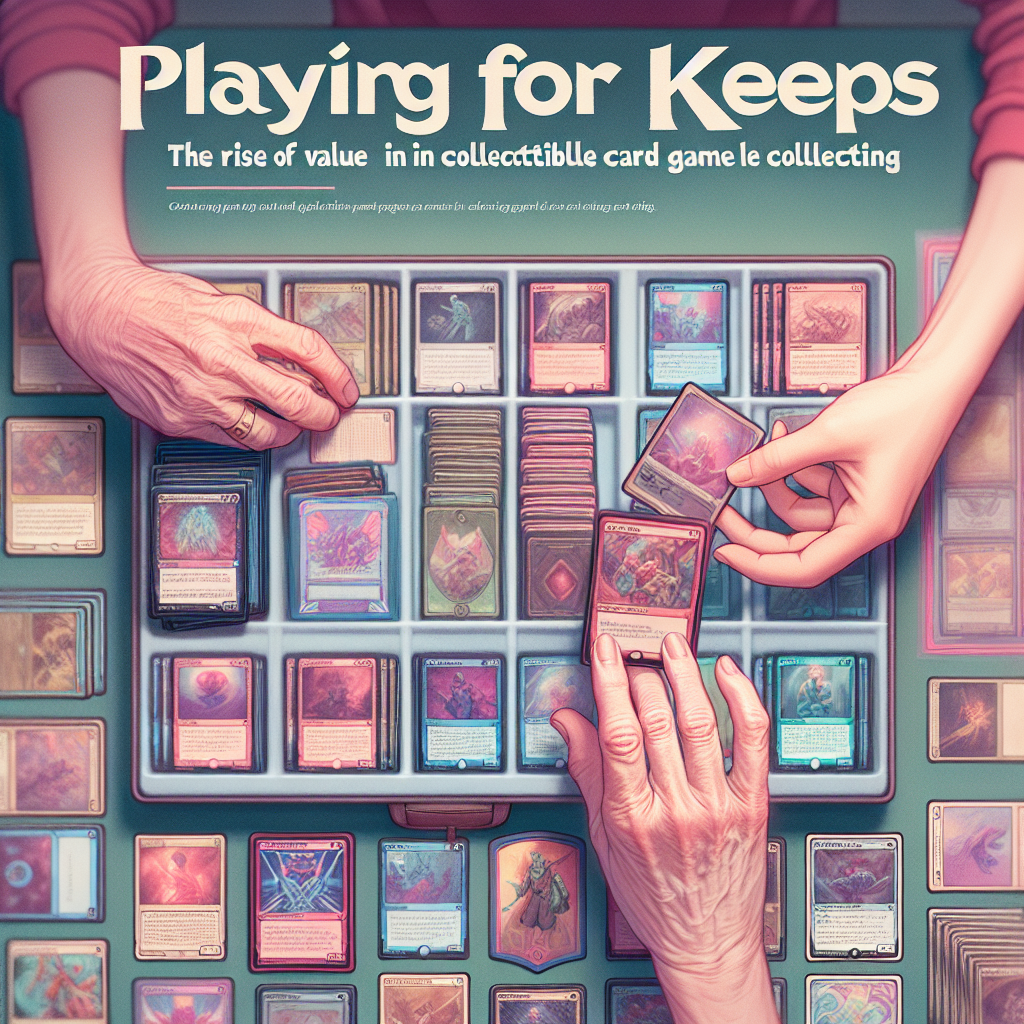Playing for Keeps: The Rise of Value in Collectible Card Game Collecting
In recent years, the world of collectible card games (CCGs) has evolved dramatically, transforming from a hobby primarily enjoyed by enthusiasts to a burgeoning market teeming with value, investment potential, and community engagement. Games like Magic: The Gathering, Pokémon, and Yu-Gi-Oh! have not only captured the imagination of players worldwide but have also become lucrative assets for collectors. This rise in value within the CCG landscape merits a closer look at its origins, current trends, and implications for both players and collectors.
The Genesis of Collectible Card Games
The conception of CCGs can be traced back to the early 1990s with the release of Magic: The Gathering. Created by mathematician Richard Garfield, this game introduced the idea of a trading card system where players could build customizable decks from a pool of cards, each with unique abilities and traits. This innovation allowed for creativity and strategic depth, which captivated players and collectors alike.
As the genre expanded, more titles entered the market, each bringing its own flavor and community. The Pokémon Trading Card Game, launched in 1996, quickly became a phenomenon, appealing to children and nostalgic adults who wished to relive their childhoods. Meanwhile, Yu-Gi-Oh!, based on the popular anime series, introduced a different narrative-driven experience that drew in fans from various demographics.
The Collector’s Market Emerges
As these games gained popularity, the cards themselves began to hold intrinsic value. Rare cards, often characterized by unique artwork, limited editions, or powerful abilities, became coveted items. The fact that players could assemble effective decks with these cards meant that a player’s success could hinge on their collection, further driving demand.
Furthermore, the rise of online platforms and auction sites like eBay and TCGPlayer made it easier for collectors to buy, sell, and trade cards. Communities began to emerge around card trading, and localized shops started hosting tournaments and events, further embedding CCGs into the fabric of gaming culture.
In recent years, the scarcity of certain cards has led to astonishing market valuations. For instance, in early 2021, a Black Lotus card from Magic: The Gathering fetched an astounding $511,100 at auction—the highest price paid for a trading card at that time. Such staggering prices have not only caught the attention of dedicated collectors but have also attracted a new wave of investors and speculators seeking financial gain.
Factors Contributing to the Rise in Value
1. Nostalgia and Fandom
Many collectors are driven by nostalgia. CCGs often hold sentimental value, reminding players of childhood experiences and cherished memories. As adults re-engage with these games, they frequently seek to recapture that magic by collecting cards from their youth.
2. Trend of Investment
The trend of viewing collectible items as investment opportunities has permeated various sectors, including art and sports memorabilia. CCGs fit into this mold as more collectors seek to diversify their investments. With platforms that allow for easy valuation and trading, more people are turning to CCGs as a logical addition to their asset portfolios.
3. Limited Supply and Demand
The nature of collectible items is that they are inherently limited; many cards are printed in lower quantities, and certain editions are intentionally retired. This scarcity creates a supply vs. demand dynamic that can dramatically inflate prices. Players and collectors are often willing to pay premium prices for rare cards, fueling a cycle of value appreciation.
4. The Rise of Digital Collectibility
Digital versions of CCGs have also influenced the physical card market. With games like Magic: The Gathering Arena and Pokémon TCG Online, players have increasingly engaged with the competitive aspects of these games, leading to an overall increase in interest and, subsequently, investment in physical cards.
The Implications of CCG Value Appreciation
The soaring value of collectible cards has several implications for the gaming community.
For Players
On one hand, the economic aspect can enhance the thrill of building a deck and competing, as well as create opportunities for players to earn money through tournaments and sales. However, it can also deter new players who may find entry barriers too steep due to the high prices of rare cards.
For Collectors
For dedicated collectors, the landscape is rich with opportunity. The sheer complexity and diversity of the collectible card market foster a vibrant community, with players and collectors sharing their passions through online forums, social media, and local events. However, the pressure of fluctuating values can also lead to speculation and hoarding, complicating the dynamic of collecting for pure enjoyment.
Conclusion
The rise of value in collectible card game collecting is a testament to the enduring appeal of the medium. It combines nostalgia, investment potential, community engagement, and strategic gameplay into a compelling narrative that continues to evolve. As both players and collectors navigate this landscape, CCGs will likely remain a significant cultural and economic force, inviting new enthusiasts to join the ranks of those who play for keeps.




